Quantitative Glycoproteomics and Glycoprotein Informatics
Posted in Projects
Glycosylation is a set of highly diverse pathways that modify protein chemistry, their interactions and many related biological processes including cell-cell or host-pathogen interactions driving immune responses. Recent developments in the mass spectrometry of glycopeptides improved their identification and allowed us to develop workflows for their quantification. We want to optimize glycoproteomic analyses, develop data independent quantification of glycopeptides (GP-SWATH DIA LC-MS/MS), and design efficient targeted mass spectrometric assays (LC-MS/MS-MRM and HR-PRM). To this end, we established a library of glycopeptide transitions called GPTwiki (http://gptwiki.glyomics.org) with the aim to disseminate the information needed for the adoption and further development of the targeted assays in the research community. Optimized fragmentation and separations taking into consideration the glycan portion of the glycopeptide are the key factors in the development of the workflows.
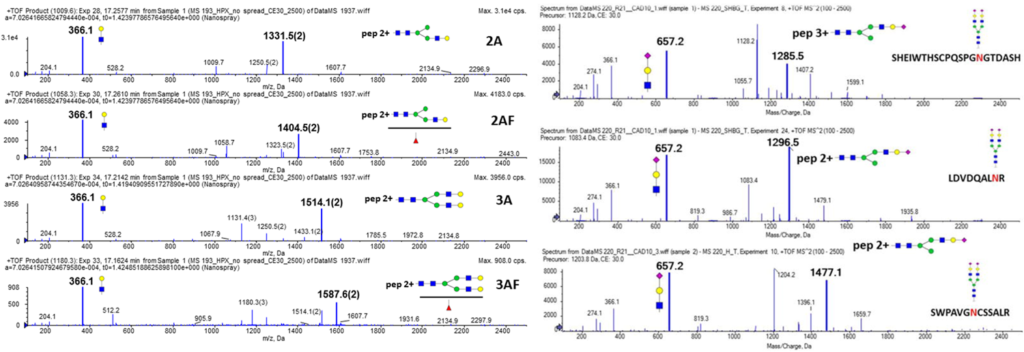
Figure 1. Energy optimized “soft” CID of different glycoforms and glycopeptides provides predictable glycan structure-dependent fragments useful for identification and quantification of the analytes. Sanda et al (2017) Anal Bioanal Chem. 409, 619–627.
We designed generally applicable assays applicable to various glycan structures associated with any peptide that can be implemented on a variety of mass spectrometers commonly used in research, biopharmaceutical, or clinical laboratories.
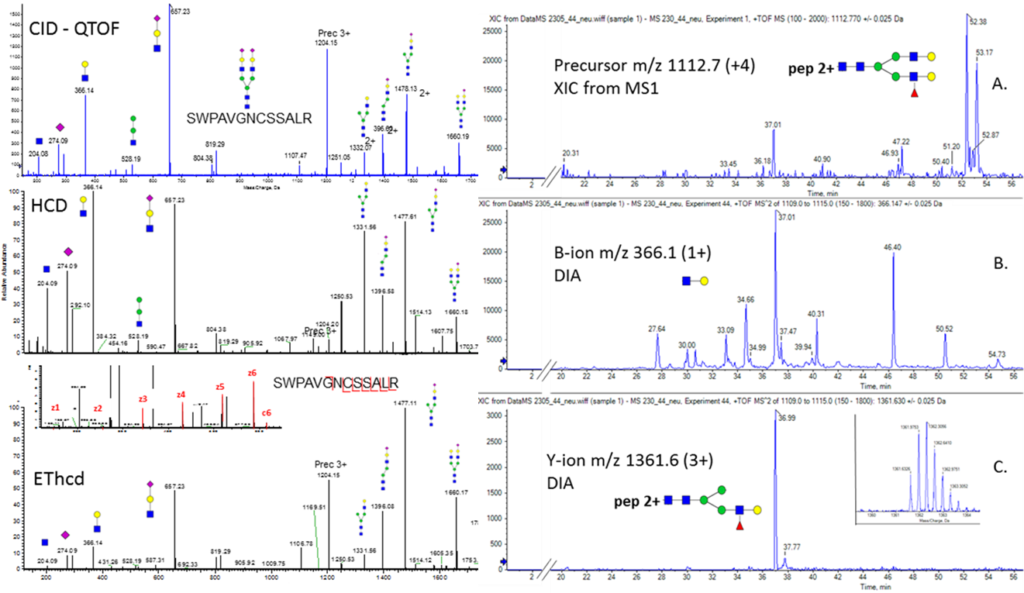
Figure 2. Comparison of the optimized fragmentation using beam-type CID (6600 TripleTOF), “soft” HCD and EThcD (Orbitrap Fusion Lumos). Selectivity of the fragments allows GP-SWATH DIA or targeted LC-MS/MS quantification as shown on the example of the A2G2F glycoform of the haptoglobin peptide MVSHHNLTTGATLINEQWLLTTAK in a tryptic digest of serum.
As we expand the transition libraries, we improve the glycopeptide analysis workflows to resolve biologically important structural motives using innovative chromatography, ion mobility, or mass spectrometry.
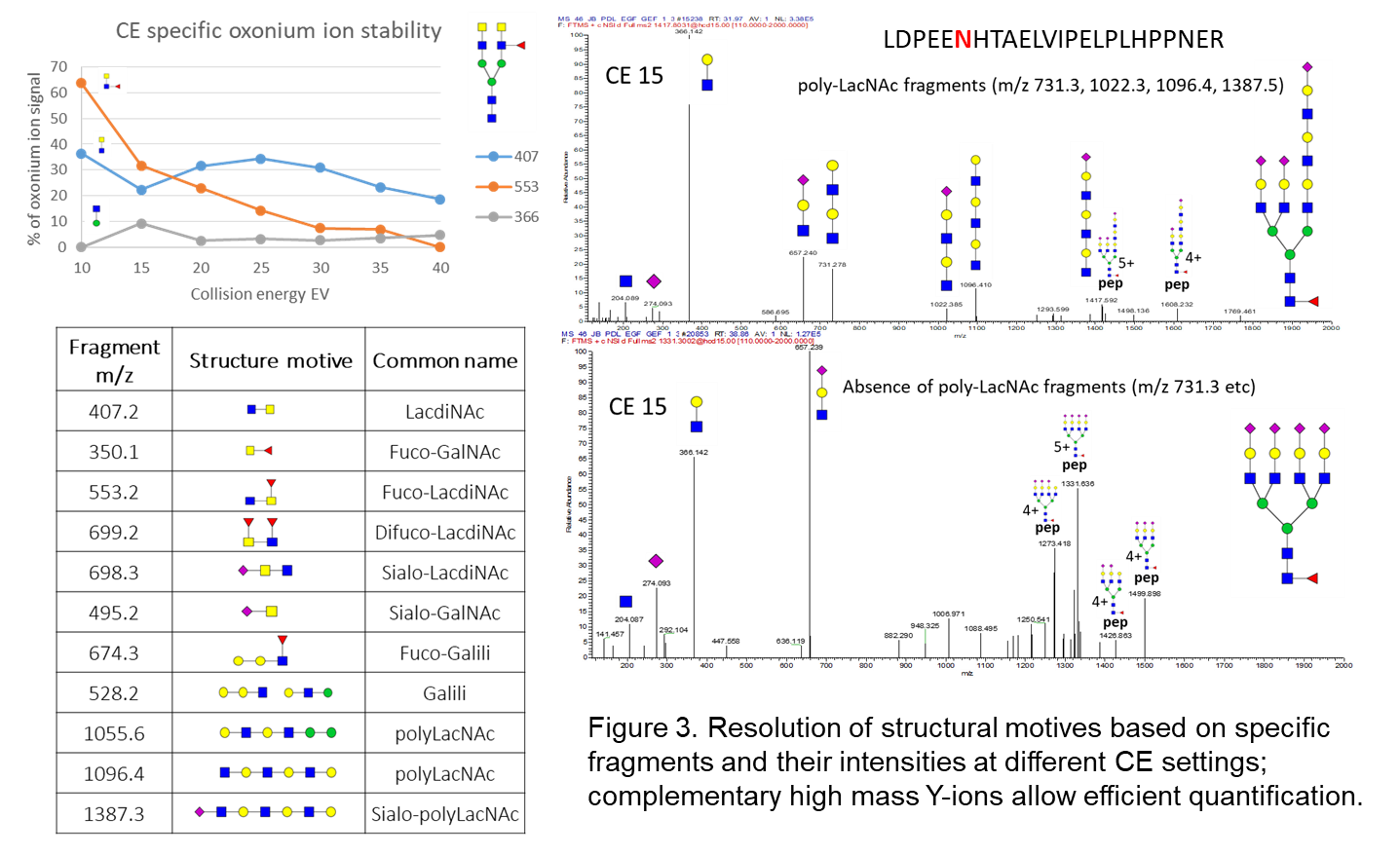
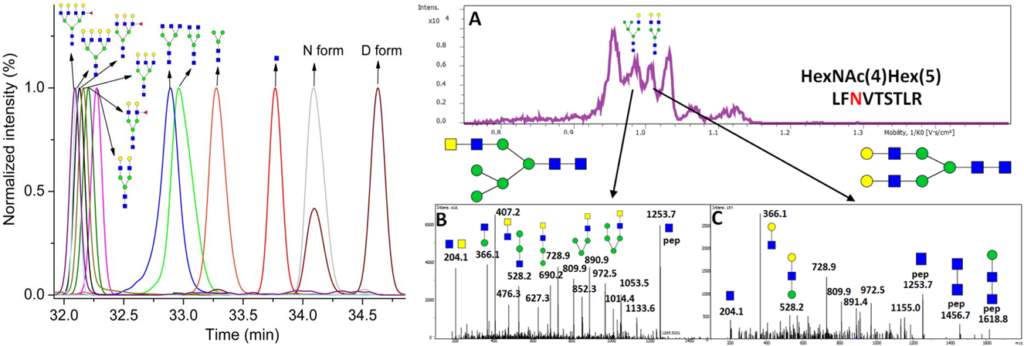
Figure 4: Chromatographic separations of several glycoforms of haptoglobin (nanoAcquity UPLC, Waters and 6600 TripleTOF, Sciex) and trapped ion mobility separation (timsTOF Pro, Bruker) of the following isobaric HexNAc(4)Hex(5) structures of PD-L1: A. hybrid; and B. complex bi-antennary N-glycoforms. Kozlik et al (2017) Electrophoresis. 38, 2193–2199; Sanda et al (2020) Anal Chem. 92(12), 8262–8267.
Our goal is to enable studies of the glycosylation pathways in model systems and in clinical translational studies of various disease pathophysiologies. Reliable clinical assays measuring site-specific glycoproteoforms with resolved structural motives have the potential to change the current diagnostic paradigm and to identify new therapeutic targets among the many glycoprotein that remain largely unexplored.
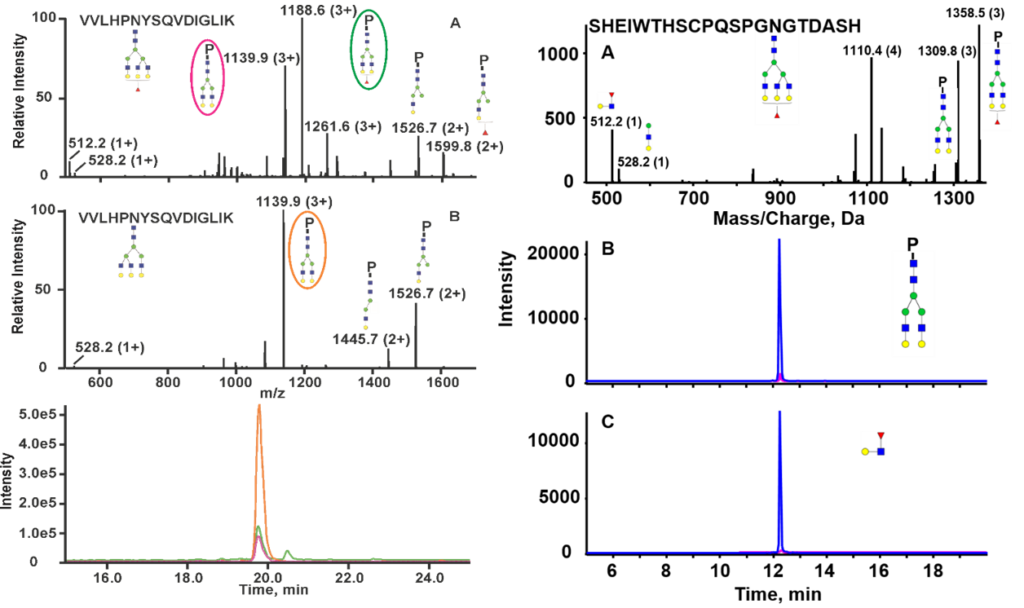
Figure 5. LC-MS/MS-MRM assay of a fucosyled glycopeptide of haptoglobin and HR-PRM assay of a fucosylated glycopeptide of sex hormone binding globulin measured in tryptic digests of serum using optimized “soft” CID workflows. Yuan W et al (2018) J Prot Res. 17, 2755-66; Yuan W et al (2019) Anal Chem. 91, 9206-9212.
